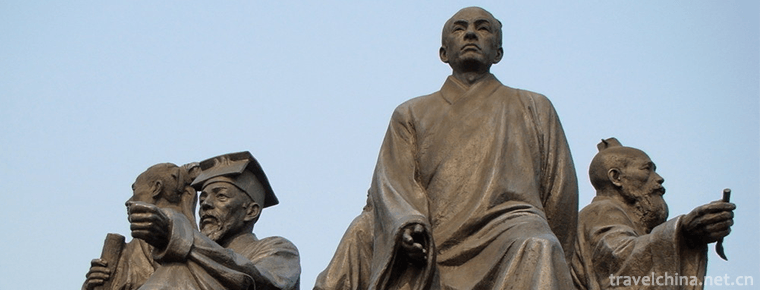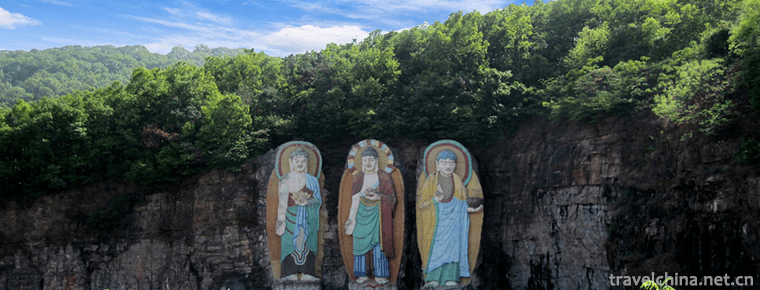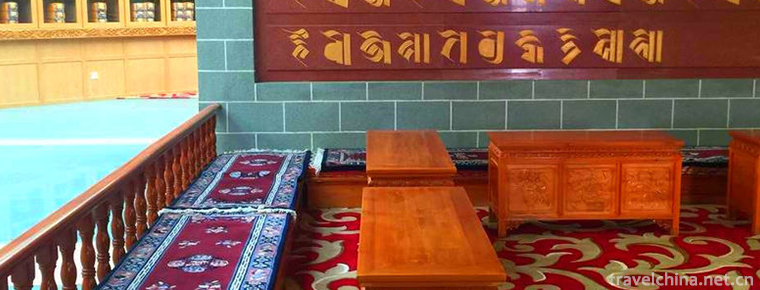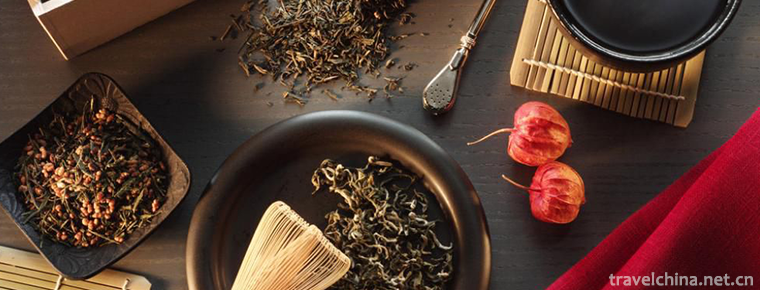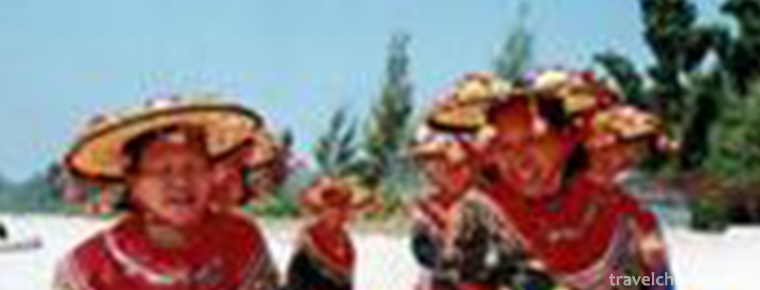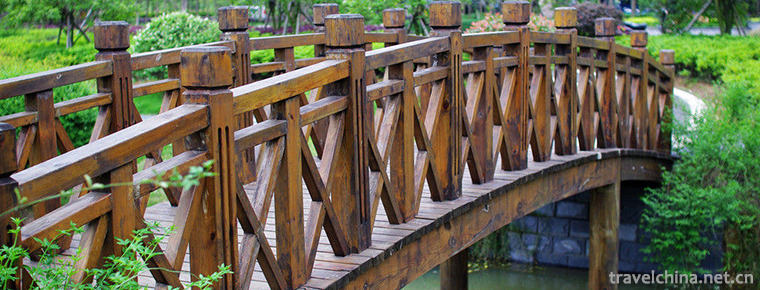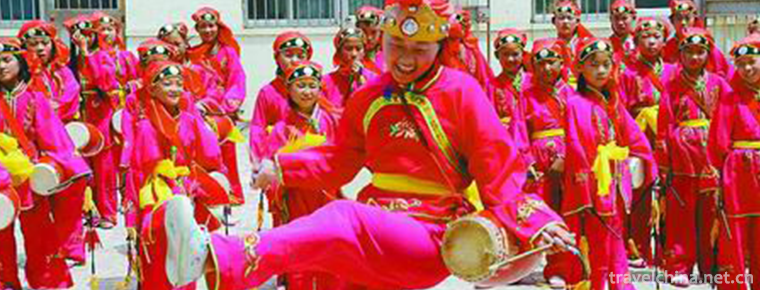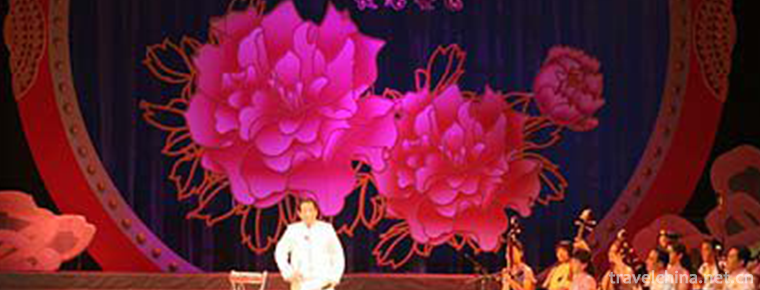Tongrentang Traditional Chinese Medicine Culture
Tongrentang Traditional Chinese Medicine Culture
Tongrentang Traditional Chinese Medicine Culture, one of the traditional Chinese medicine, is declared by Beijing Tongrentang (Group) Co., Ltd., one of the national intangible cultural heritage.
Tongrentang's traditional Chinese medicine culture embodies the value of "fellow practitioners'benevolence, benevolence and health preservation", the quality concept of "processing is too complicated to save labor, tasting is too expensive to reduce material resources", the management concept of "trustworthiness, respect for people" and the professional ethics of "no bullying for children, no discrimination", as well as the brand and unique marks of Tongrentang.
On May 20, 2006, Tongrentang Traditional Chinese Medicine Culture was listed in the first batch of national intangible cultural heritage list of traditional medicine, item number IX-7.
historical origin
From Ling Doctor to Gold Sign
During the Yongle reign of the Ming Dynasty, Leliangcai Langzhong of Zhejiang moved to Beijing, where he worked as a bell doctor. In 1669, Tongrentang was officially established in Beijing with the words "Kangxi Jiyou" on it.
In 1702, Le Fengming, the son of Le Xian, opened Tongrentang Drug Shop outside the front gate of Beijing and set up shop to sell medicine. Tongrentang entered a new stage of development. After the development, the reputation is growing.
(2) The history of imperial medicine worship
As Tongrentang dispensed medicines with remarkable curative effect and increasing reputation, Tongrentang won the court's appreciation. In the first year of Yongzheng in the Qing Dynasty (1723), Tongrentang was appointed to worship imperial medicine until 1911. It lasted for 188 years after eight emperors.
Since the eighteenth year of Qianlong in the Qing Dynasty (1753), Tongrentang began the history of concession, lease and joint venture, gradually changing from Le's sole proprietorship to joint venture. In the twenty-third year of Qingdaoguang (1843), Tongrentang returned to Lepingquan, the tenth generation of Le's heir, and once again became a sole proprietorship enterprise of Le's. After Lepingquan's death, his four sons jointly managed Tongrentang until the public-private joint venture.
(3) Modern times
In 1954, Tongrentang took the lead in implementing public-private joint ventures in response to the call. In 1979, Tongrentang factory and store were restored. In 1992, the establishment of Tongrentang Group Co., Ltd. in Beijing marked Tongrentang's entry into the stage of modern company system management, and its subsequent restructuring into a wholly state-owned Beijing Tongrentang (Group) Co., Ltd.
Since its establishment in 1669, Tongrentang has experienced dynastic changes and world events for more than 300 years up to June 2018. With its unique culture and strong beliefs, Tongrentang has stood in the traditional Chinese medicine industry and become an industry model and spiritual model.
Non-legacy features
First, the value of "fellow practitioners'benevolence, benevolence and health preservation"
As of June 2018, "fellow practitioners'benevolence and morality help the world to maintain health" has become the value of Tongrentang people; righteousness as the top, righteousness and benefit coexist, which is the survival philosophy of Tongrentang people. Its inherent benevolence and the spirit of benevolence are highly consistent with the core of Confucian benevolence spirit inherited by the Chinese nation for thousands of years.
Second, the quality concept of "processing is too complicated to save labor and tasting is too expensive to reduce material resources"
"Despite the complexity of processing, we dare not save labor, and the taste is expensive, we dare not reduce material resources." Le Fengming, the founder of the pharmacy, wrote down the eternal commitment of Tongrentang people to the cause of traditional Chinese medicine in Tongrentang Pharmacopoeia Narrative. No matter what kind of medicinal materials Tongrentang processed, the fried must be fried, the steamed must be steamed, the roasted must be roasted, the sun must be basked, the frost must be frozen, never jerry-built. Quality is the industry ethics that Tongrentang people have adhered to for generations.
For Tongrentang, the quality of imperial medicines should be guaranteed by family life. In view of this, the consciousness of quality as life has been integrated into the marrow of Tongrentang people in past dynasties, and they dare not slack off for hundreds of years. Quality is related to life and death. Since we are cautious, we must be careful.
3. Business philosophy of "trustworthiness, respect for people" and professional ethics of "no bullying and no discrimination among children and elders"
According to Mr. Le Chongxi, the thirteenth musician of Tongrentang, he recalled: "Tongrentang pill powder has always been made from real materials and processed in accordance with the ancient times. It treats every patient equally and only carefully waits on the imperial Pharmacy... As for the medicines used in the imperial pharmacy, they are stored in separate rooms, and there is no difference between the medicines themselves and those used by civilians." In hundreds of years of operation, Tongrentang has always insisted that children should not be deceived, officials and poor people should be treated equally, and truly achieved the benevolence of doctors.
In addition, Tongrentang has regularly published price lists since the Qing Dynasty, making prices open and transparent, selling fairly to all patients, avoiding price chaos, and ensuring the reputation of shops.
4. Pharmaceutical Characteristics
Tongrentang, as an old brand of traditional Chinese medicine industry, can last for a hundred years. The fundamental reason is its unique pharmaceutical methods and processing techniques of traditional Chinese medicine.
In 1706, Le Fengming summed up his predecessors'pharmaceutical experience on the basis of imperial secrets, folk prescriptions and ancestral prescriptions. He completed "Tongrentang Le's Generation Ancestor Pill Disseminating Ointment Formula" and "Tongrentang Pious Xiu Zhumen Yingyuan Pill Disseminating Ointment General Catalogue". Tongrentang formula was integrated with Qinggong medicine to form its unique brand mark. "Unique prescription, excellent material selection, exquisite technology and remarkable curative effect" is a summary of Tongrentang's pharmaceutical characteristics.
1. Unique prescription
Tongrentang insists on traditional matching pharmaceuticals to ensure the quality of medicines. "Tongrentang Le's generation ancestral pill Sangao Dan Blanking Formula" is strictly confidential by Lejia operators, and constantly collect, collate and optimize. The key steps in the pharmaceutical process are operated by different workers in different production workshops. As of June 2018, the products produced by Tongrentang have been incorporated into the national standard system.
2. Excellent material selection
Le Fengming, founder of Tongrentang Pharmaceutical Store, put forward in the "Tongrentang Pharmaceutical List Narration" in 1706 that "Following elbow, distinguishing origin" as of June 2018 is Tongrentang Pharmaceutical Ancient Training, which is also the criterion for selecting authentic medicinal materials for Chinese medicine stores. It is the unique feature of Tongrentang to follow and maintain the fine tradition of "excellent material selection" by picking and purchasing medicinal materials according to their harvesting time and planting origin.
Tongrentang's selection of medicines follows the principle of "not afraid of high prices, as long as the goods are good". When purchasing medicinal materials, we need large quantity and high price, and only choose the best quality. If you buy rhubarb, it should be the most solid, not foaming; if you buy trichosanthin, it should be thick and powder, not thin and tendon. High quality raw materials provide a fundamental guarantee for the efficacy of drugs.
3. Exquisite craftsmanship
Tongrentang inherits the traditional Chinese medicine processing technology, and has obvious technical advantages in the production of traditional Chinese medicine pills, powder, liquor and plaster. Its main characteristics are "pure material feeding" and "processing according to law".
In order to meet the requirement of "clean material", Chinese herbal medicines need to remove impurities and non-medicinal parts, such as coring, peeling, hair removal, reed removal, coring and stemming removal. More than 10 methods such as washing, sieving, wintering and picking are needed. There are more than 20 production processes, including 52 processing methods such as water-containing, water-fire, koji-making and so on.
Tongrentang has its own characteristics in the fineness of crushing Chinese medicinal materials with different textures, the uniformity of preparation, the temperature and time of mixing, the technology of making pills by hand, the technology of wrapping gold and the technology of hanging wax skin.
4. Keep pace with the times
With the progress of the times, many traditional Chinese medicines, such as tiger bone, rhinoceros horn and so on, have been banned because of their involvement in endangered wild animals and plants, resulting in the lack of raw materials for many prescriptions of Wansangao Dan and the inability to complete drug compatibility. In the face of this situation, Tongrentang actively carries out research on the substitution of endangered wild animals and plants, and adopts artificial large-scale cultivation to meet the demand of drug production.
Inheritance and Protection
Inheritance value
Tongrentang's traditional Chinese medicine culture has been inherited for more than three hundred years. It is not only the enrichment of the essence of Chinese traditional medicine culture, but also the rich national spirit.
Heritage figures
In June 2007, four people, Lu Guangrong, Tian Ruihua, Jin Longying and Guan Qingwei, were selected as the representative inheritors of the national intangible cultural heritage of Tongrentang Traditional Chinese Medicine Culture Project. They have made outstanding achievements in the research of pharmacy classics, the identification and processing techniques of traditional Chinese medicines, the reform of traditional Chinese medicines, the clinical diagnosis and treatment of traditional Chinese medicine, and the inheritance and development of Tongrentang's traditional Chinese medicine culture. They have contributed to Tongrentang's brand and cultural inheritance, as well as to the promotion of traditional Chinese medicine culture.
protective measures
As early as in the years of Xianfeng and Tongzhi in the Qing Dynasty, Tongrentang used government forces to protect Tongrentang's name many times and punished the cases of counterfeiting Tongrentang's signboard. At the same time, the family rules of "only one family without a semicolon" are implemented within the family.
After the founding of the People's Republic of China, Tongrentang attached great importance to brand protection, actively participated in public welfare undertakings, played the role of Tongrentang's cultural power, and made its medical culture deeply rooted in the hearts of the people. In the process of developing international market, Tongrentang adheres to the strategy of "market is not moving, trademark first", firmly establishes the consciousness of trademark protection, actively propagandizes and promotes the culture of traditional Chinese medicine and promotes the brand influence through the dual-wheel drive of economy and culture.
As of June 2018, Tongrentang has made unremitting efforts to protect traditional Chinese medicine culture through various channels and measures. A national, municipal, district and group non-genetic successor echelon has been established and formed. The National Non-Heritage Productive Protection Demonstration Base of Tongrentang in Beijing and the inheritance base of processing techniques of traditional Chinese medicines are also under construction.
social influence
Important activities
On the morning of 2011, the launching ceremony of the "Beijing Old Brand intangible cultural heritage national exhibition" was held at the T3 terminal of the Capital Airport. Li Weiwei, Vice Director of the Municipal Commercial Committee, Wang Weiping, Director of the Port Office of the Municipal Government, Jiang Junxian, President of the Beijing Old Brand Brand Association, and other leaders attended the launching ceremony.
"Beijing Old Brand Inmaterial Cultural Heritage National Exhibition" is sponsored by the Beijing Business Committee and the Port Office of the Beijing Municipal Government, and sponsored by the Beijing Old Brand Association. The event lasts for one month and ends on January 15, 2012. Tongrentang Traditional Chinese Medicine Culture is displayed at the exhibition.
Honorary Award
Beijing Tongrentang Co., Ltd. won the CSR Chinese Culture Award for its outstanding contribution to the protection and inheritance of traditional Chinese medicine and traditional Chinese medicine culture at the award ceremony of National Humanities and History magazine in 2015.
Cultural anecdotes
Lejia has been engaged in the cause of traditional Chinese medicine for generations. Lejia has been a doctor of bell medicine and a doctor of Tai medicine since childhood. Later, when he saw corruption in the Qing Dynasty, he resigned and went home to treat the people. At first, Le Xianyang only prescribed for the patient's pulse. After a period of time, Le Xianyang felt that there should be a pharmacy, which could not only prescribe, but also grasp the medicine, which would greatly facilitate patients, but also enable his own dispensing technology to be applied. So he opened a Tongrentang pharmacy with years of hard work.

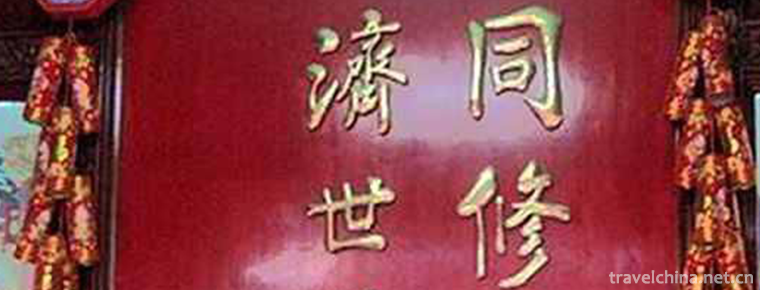
-
Kaiping Garden
Kaiping Liyuan is located in Bohua Village, Tangkou Town, Kaiping City, Guangdong Province. It is a private garden of Xie Weili, an overseas Chinese traveling to the United States in Tangkou Town.
Views: 130 Time 2019-01-29 -
Suzhou suburb mudu town
Mudu Ancient Town, nicknamed Duchuan, Xujiang and Xiangxi, is located in the southeast of Jiangsu Province and the west of Suzhou Ancient City. Located in the Taihu Lake Basin.
Views: 135 Time 2019-02-07 -
Shigu Academy
Shigu Academy, located in Shigu Mountain, Shigu District, Hengyang City, an important city in central and southern Hunan Province, is the birthplace of Huxiang .
Views: 204 Time 2019-02-08 -
Xinjiang Tianshan
Tianshan Mountain in Xinjiang, the eastern part of the Tianshan Mountains, is also the main part of the Tianshan Mountains and the world natural heritage. Tianshan Mountain is one of the seven major m.
Views: 181 Time 2019-02-25 -
Purple Peng mountain
Zipeng Mountain, also known as Liling Mountain and North Jiuhua Mountain, is located in the south of Zipeng Town, Hefei City, Anhui Province. It is about 18 kilometers away from Hefei City. Since the .
Views: 175 Time 2019-03-21 -
Tibetan Medicine
Tibetan medicine is a bright pearl in the treasure house of Chinese medicine. The Tibetan people living in the snow-covered plateau for generations have accumulated .
Views: 133 Time 2019-04-05 -
Black Tea Production Techniques
Black tea, originally known as "Border Tea", was smuggled across the border by merchants as early as the end of the 16th century. In the Ming Dynasty, black tea was designated as.
Views: 113 Time 2019-05-03 -
Huidong Fishing Song
Huidong Fishing Song is one of the traditional folk arts in Guangdong Province. From the Song Dynasty, fishing songs in the shallow sea of Huidong were introduced from the coast of Fujian Province..
Views: 178 Time 2019-05-05 -
Traditional Building Techniques of Wood Arch Bridge
The traditional construction techniques of Chinese wooden arch bridges mainly include site selection, abutment construction, level measurement, arch erection, upper scissors seedling, instant leg erec.
Views: 216 Time 2019-06-06 -
Shandong Huagu
Shandong Huagu is a traditional folk art form with Huagu as the main accompaniment instrument. It is also the only type of walking songs in Shandong folk art. Shandong Huagu is very good at expressing.
Views: 160 Time 2019-06-13 -
The eldest son drum book
The eldest son drum book is the traditional art of rap and singing in Shanxi Province. Changzi County is known as the "Town of Quyi", which has a long history as well as a wide variety of Qu.
Views: 389 Time 2019-07-25 -
Siguniang Mountain Scenic Area
Siguniangshan scenic area, located in Siguniangshan Town, Xiaojin County, Aba Tibetan and Qiang Autonomous Prefecture, Sichuan Province, belongs to Qionglai mountain range of Qinghai Tibet Plateau, 220 km away from Chengdu..
Views: 149 Time 2020-11-06


